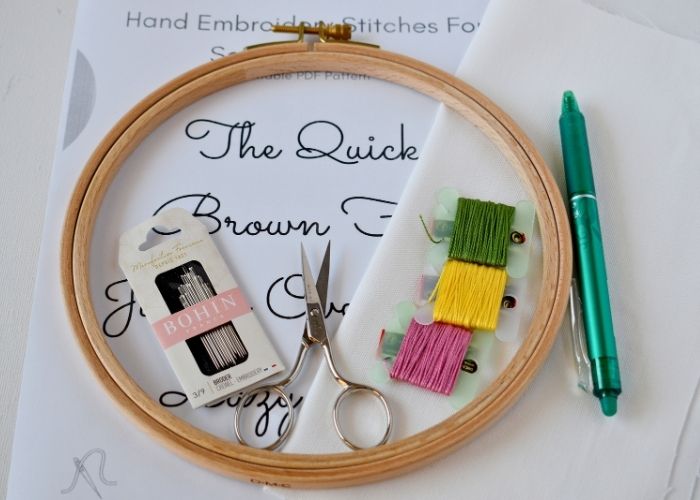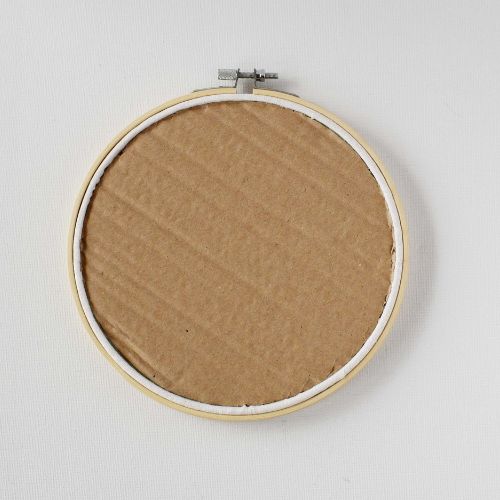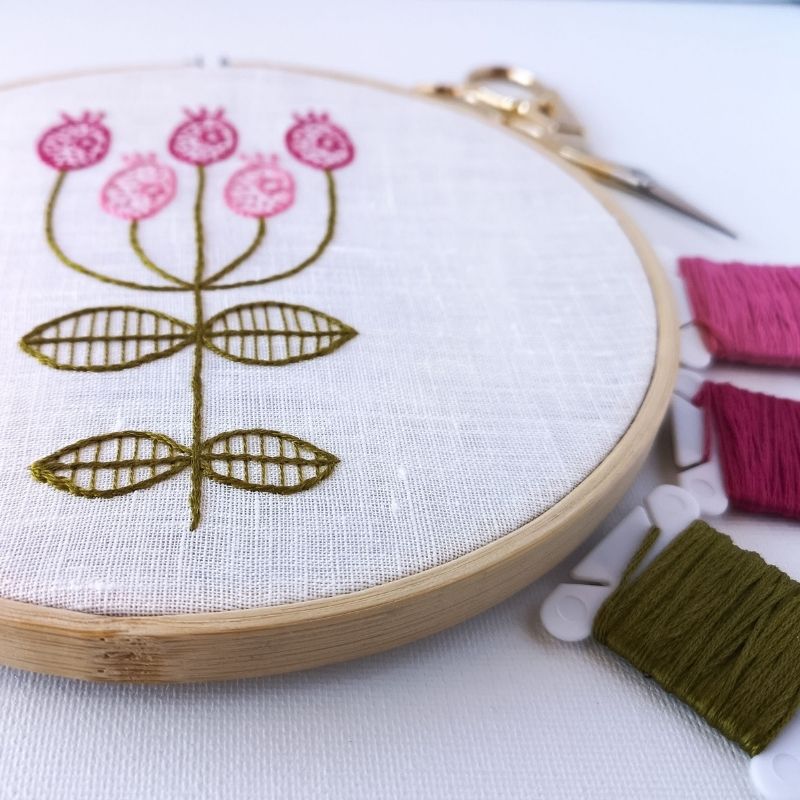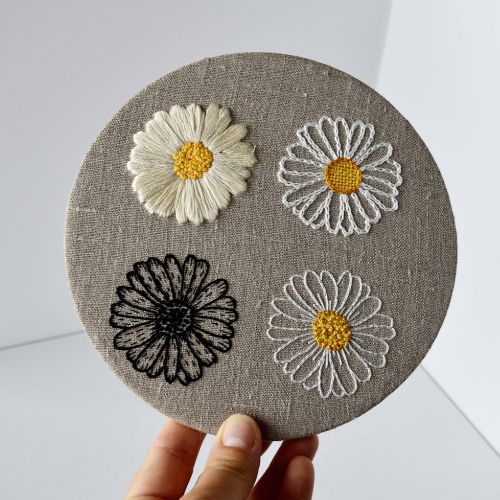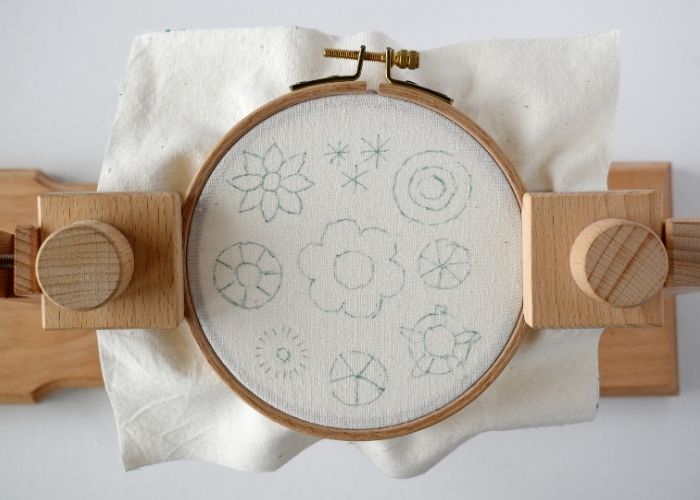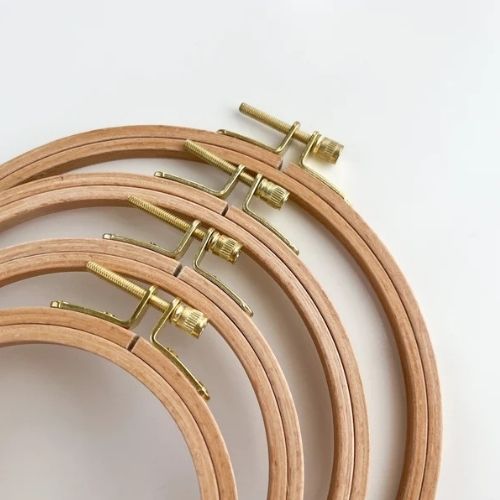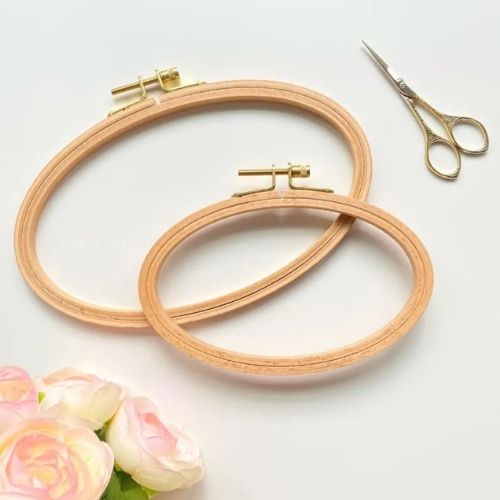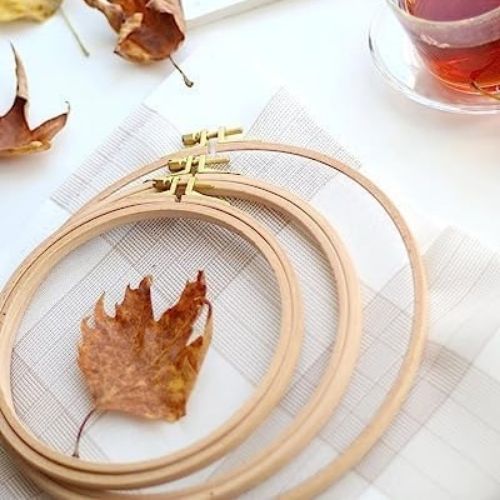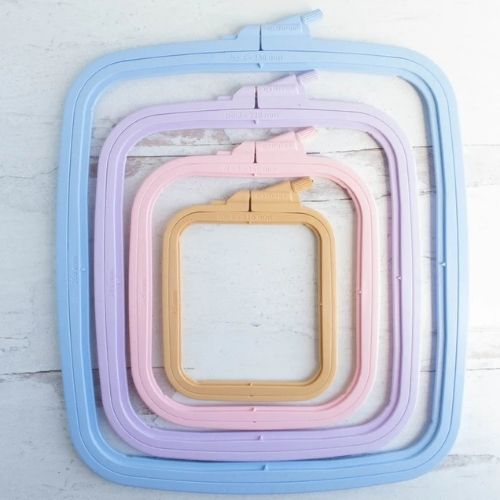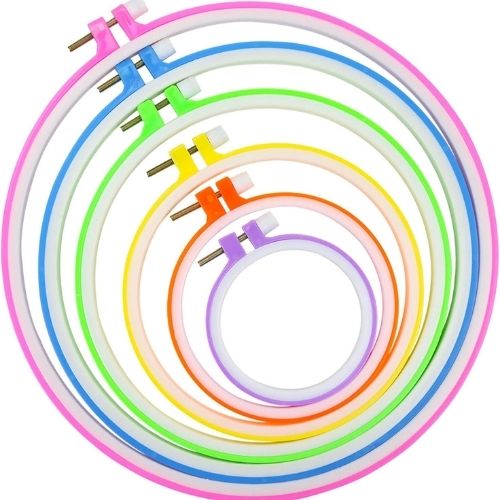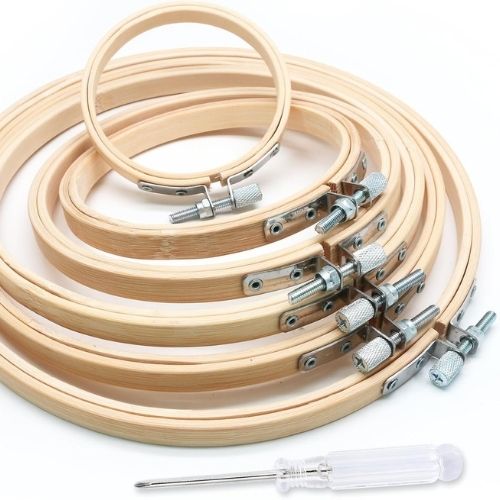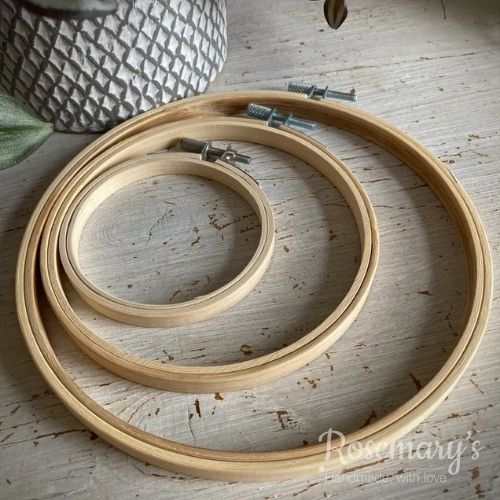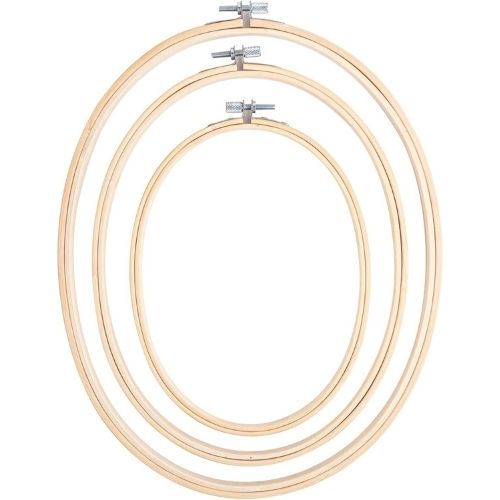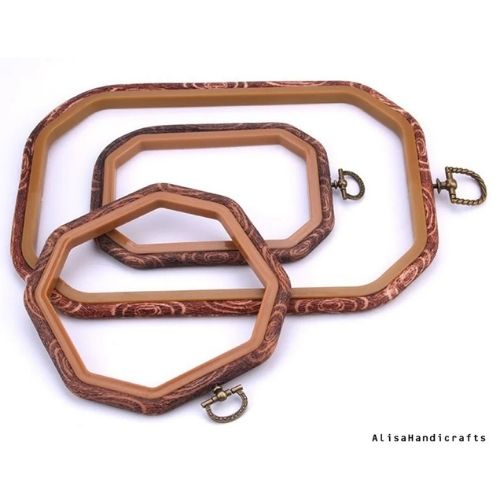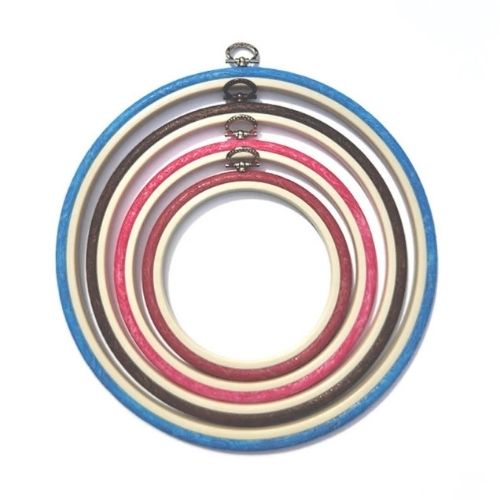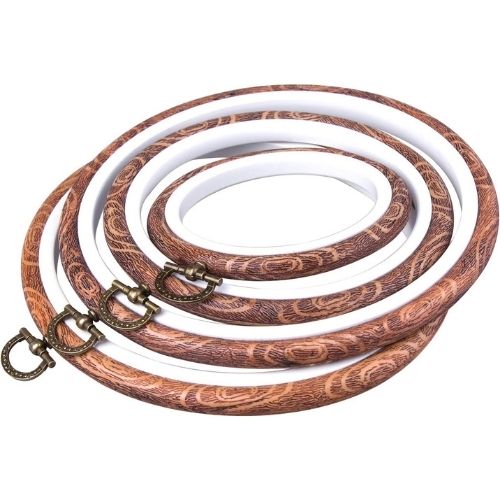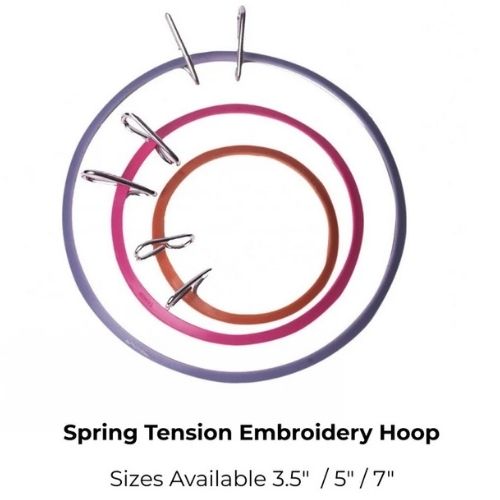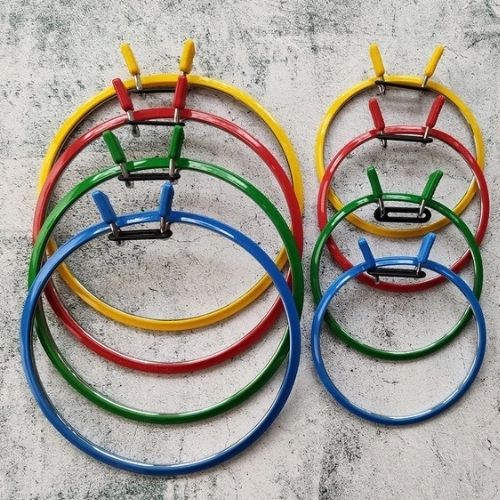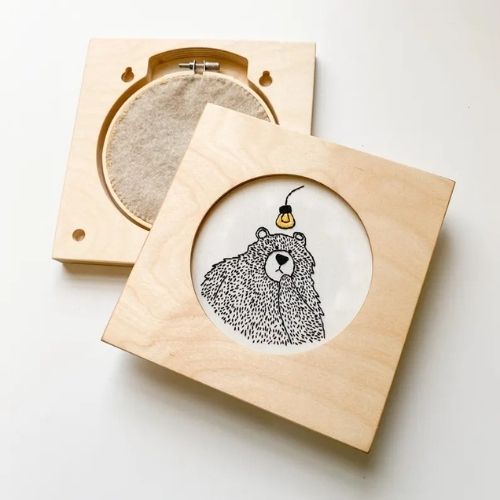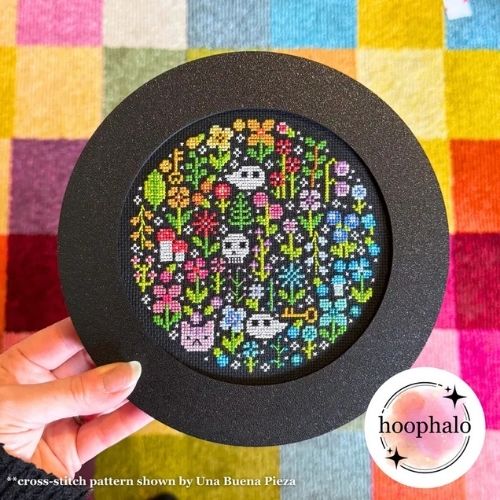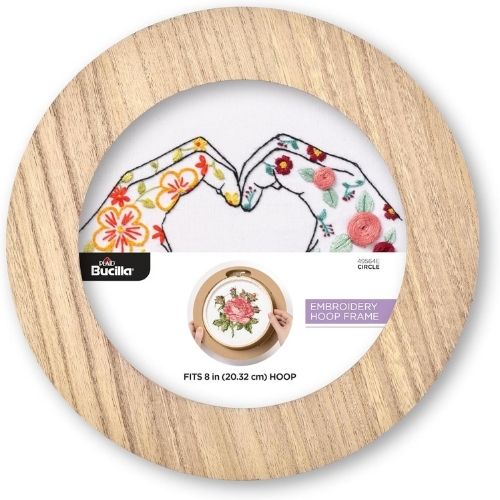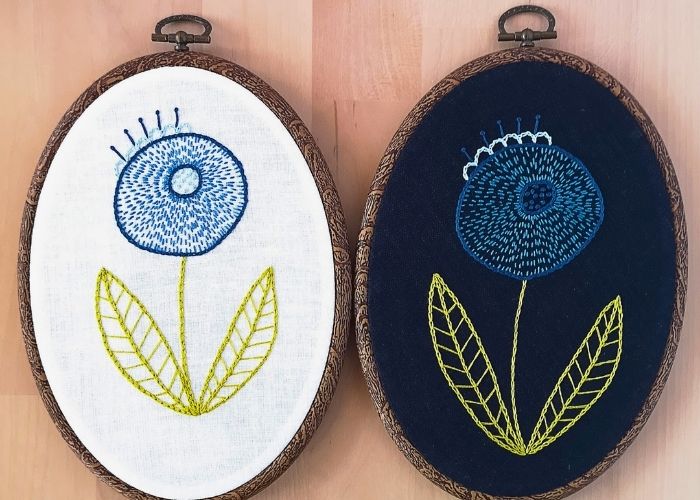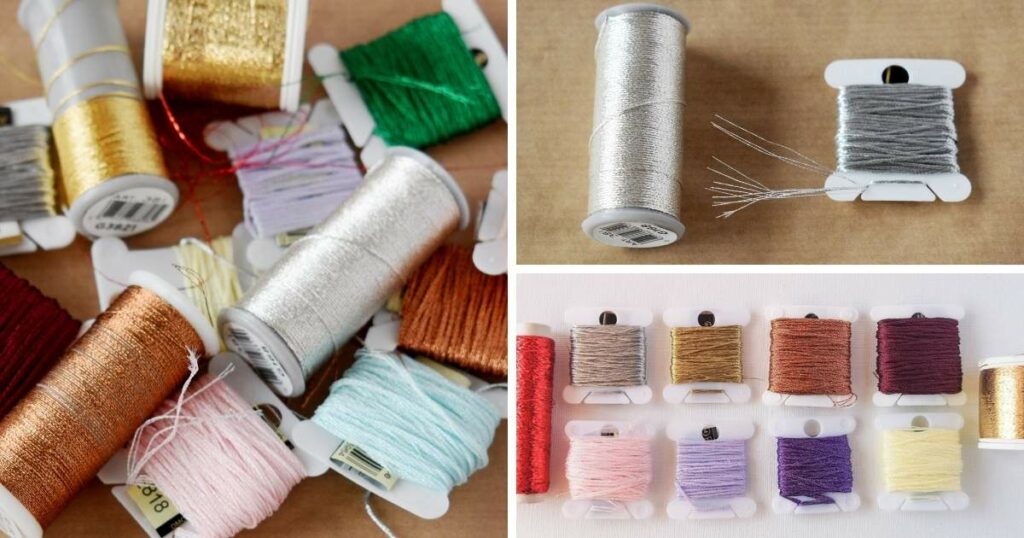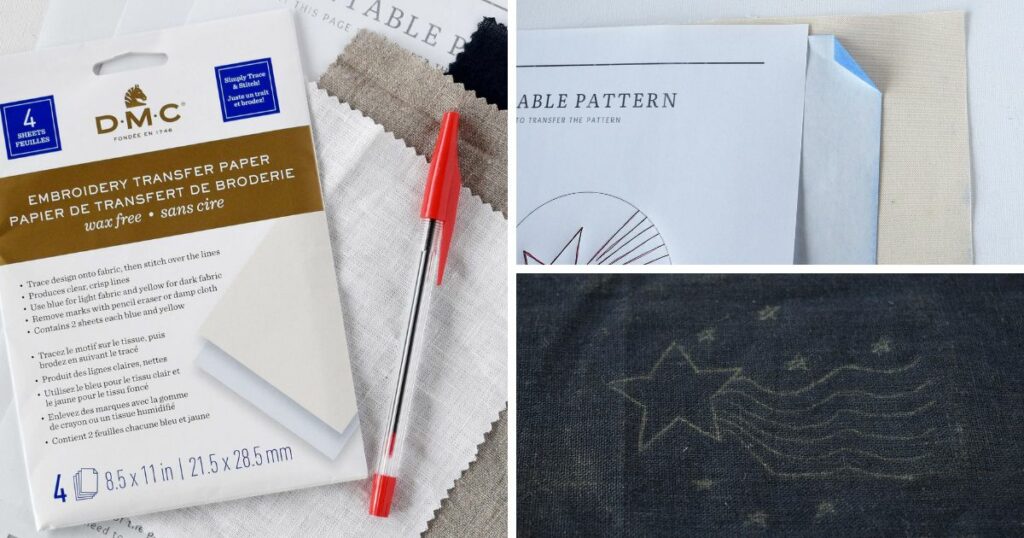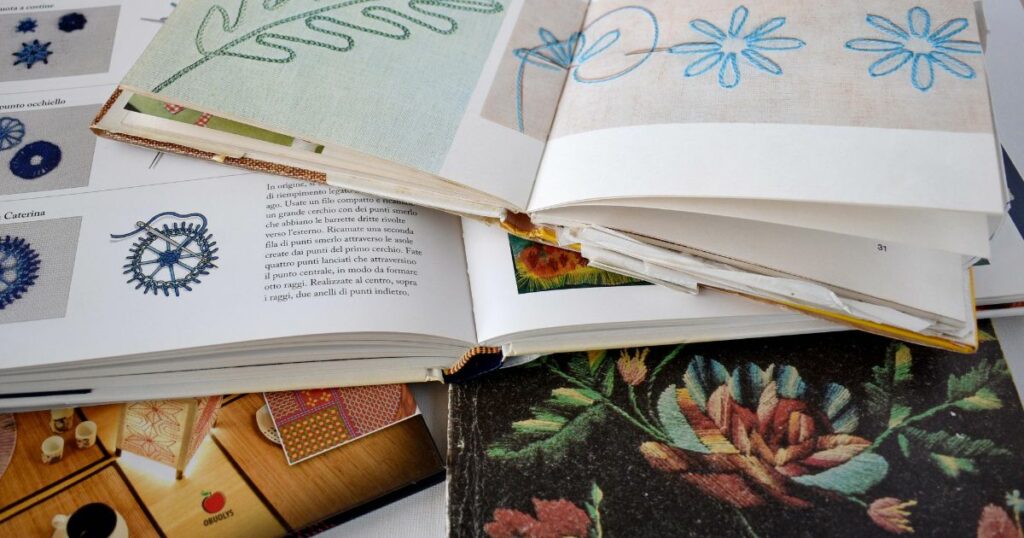Best Hand Embroidery Hoops for Modern Stitching: Types, Sizes, and How to Choose One
An embroidery hoop is one of the main items on the embroidery supplies list of every stitcher. You may change the fabric and the threads from project to project. Of course, you will also change up the needles as you go. However, the embroidery hoop, if chosen correctly, will remain, and you will use it again and again. So, how do we choose the best embroidery hoops for our projects?
Historically, embroidery frames were made from wood, bone, metal, or ivory and had primitive tension mechanisms. Throughout time, technology and materials have evolved.
In this guide, you’ll learn:
- Whether you really need a hoop
- Pros and cons of each type (wood, plastic, bamboo)
- The best sizes for different projects
- Bonus tips on using your hoop properly
Do you really need an embroidery hoop for hand embroidery?
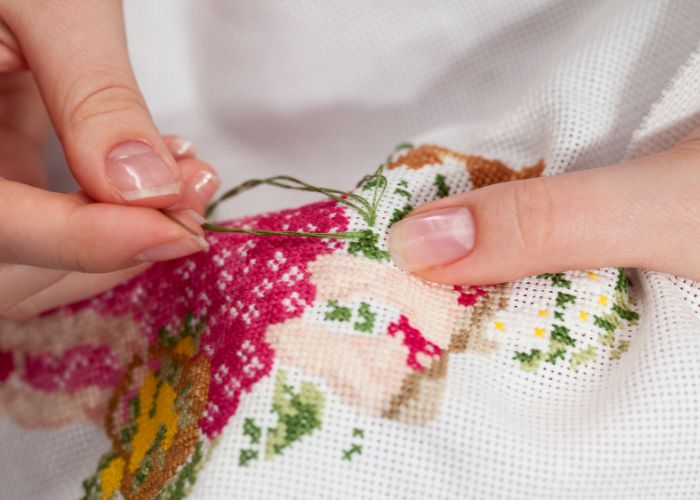
Yes and no. It depends on the embroidery project you are planning. Some embroidery techniques, such as sashiko or boro embroidery, do not require the use of an embroidery hoop. Other techniques, such as cross-stitch, can be worked with or without a hoop.
Modern surface embroidery, instead, requires the use of embroidery hoops. The hoop you use must be of good quality to ensure an even and consistent tension on the fabric while working on your project. Additionally, holding your material taut in an embroidery hoop will help you make neater stitches when stitching. It can also prevent puckering in the spaces between stitches.
Remember that an embroidery hoop is not the only way to keep your fabric taut. There are alternatives, such as Q-snaps, that are very popular among cross-stitchers. Also, you can use slate frames, scroll frames, or stretcher bar frames instead of embroidery hoops.
Different types of embroidery hoops explained
We can group hand embroidery hoops by:
- Type of tension – screw tension, spring tension, or Flexi.
- Material – plastic, wood, or metal hoops.
- Size – mini, small, medium, or large in diameter.
- Depth of the hoop
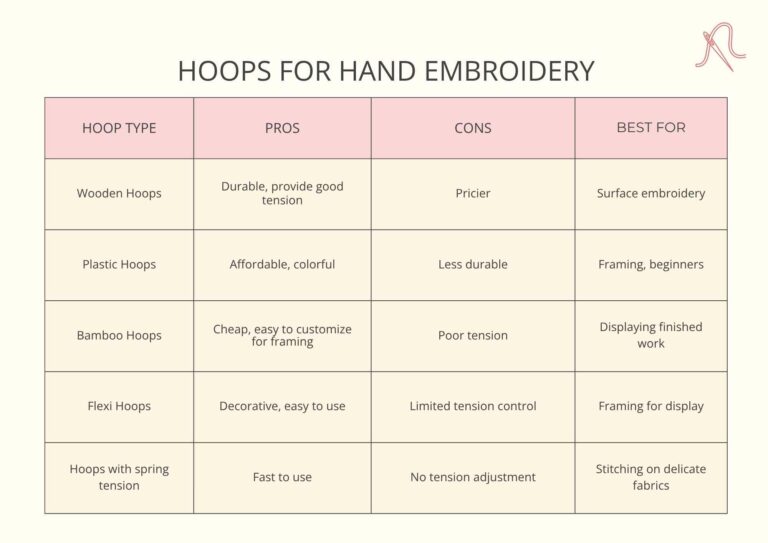
Hoops with screw tension
It is the most standard embroidery hoop, where the tension of the fabric is created by placing the piece of material between two rings. A screw on the outer ring allows you to adjust the tension on the external hoop. Screw tension hoops are available in various materials, sizes, and shapes, and are widely accessible.
When choosing a hoop with a screw tension, pay attention to the hardware. The screw must have outer ridges that serve as grips for tightening with the fingers. Additionally, a good tension screw features a slot for a screwdriver, allowing for precise tightening. Best if the hardware is all brass. The brass brackets are solid and durable, and they don’t bend, regardless of how tightly you tighten the screw.
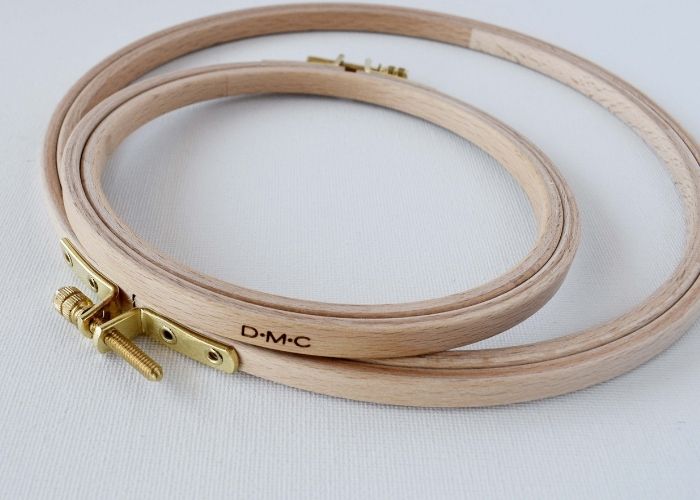
Spring tension embroidery hoops
With these hoops, tension is created by an inner metal ring that slots into a grove in the plastic or metal outer ring. These hoops are often used for machine embroidery. Spring tension hoops can also be used for hand embroidery and cross-stitch. Minor flaws of spring tension hoops include bulky handles that can get in the way and an inability to adjust the tension of the fabric.
Flexi hoops
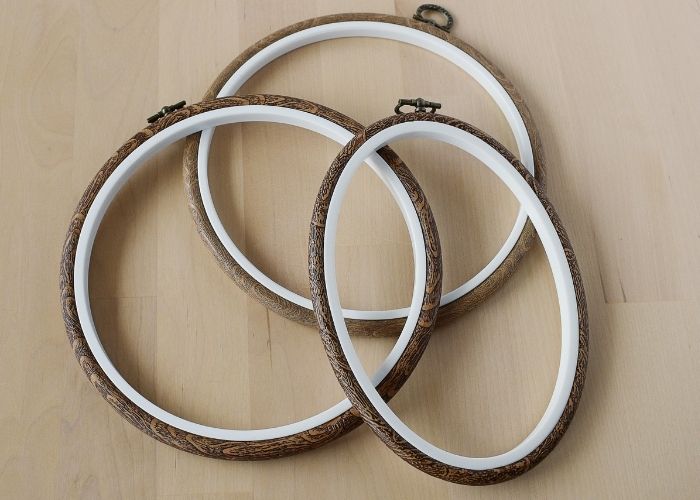
These are made from a rigid inner plastic hoop and a flexible outer hoop. Flexi hoops are pleasant to work with and maintain tension fairly well, but you cannot adjust the tension. It may be a problem if you embroider on a bulkier fabric or on a piece of very thin material.
Flexi hoops are available in various sizes and shapes. You will find round, oval, and even square Flexi hoops, with rounded edges, in many sizes.
Plastic hoops
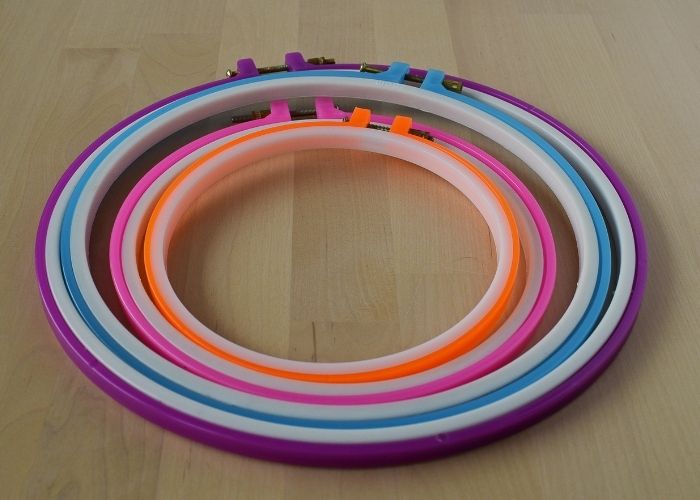
This is the most affordable option on the market. Some plastic hoops have molded edges that help keep fabric extra tight, but they can also damage it. Some plastic hoops are more rigid, while others are too flexible to maintain their shape well. If you want to choose a plastic hoop, opt for higher-quality, more rigid hoops. Also, a colorful plastic hoop can be an excellent alternative to frame your finished work.
Plastic hoops are available in various shapes, including round, oval, and square, and come in a wide range of sizes.
Metal hoops
These hoops are relatively rare nowadays, but a large number of vintage metal embroidery hoops are available on the market. Metal embroidery hoops come with a spring or screw tension regulation mechanism.
Wooden hoops
The most popular are made from wood. An excellent wooden hoop has these qualities:
- It is made from quality wood (usually birchwood) and is solid and robust.
- You can not bend it easily.
- The outer ring fits the inner ring very well.
- The hoop has a natural finish and is smoothly polished.
- There are no splinters that can snag your threads or hurt your fingers.
- It features solid and durable all-brass hardware for tension regulation, secured with a screw.
What about bamboo hoops?
Bamboo embroidery hoops are a cheap alternative to birchwood hoops. However, they are not so solid and tend to bend. Additionally, some bamboo hoops are not polished sufficiently and have splinters. However, the worst thing about bamboo hoops is that they tend to lose the tension of the fabric while in use. I’ve noticed that the rings of the bamboo hoops don’t fit as well and can leave gaps when tightened.
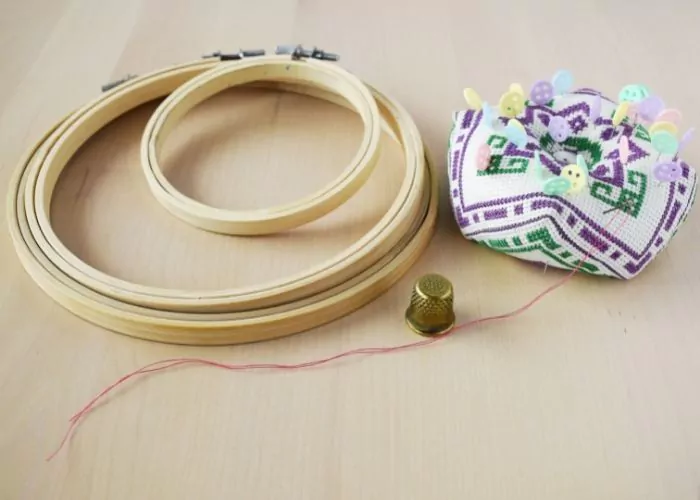
Despite all the above, I still use bamboo hoops, not for embroidering but for framing finished embroideries. These hoops are inexpensive and available in various sizes. They can be easily stained or colored with acrylic paint to create an ideal frame for your hoop art.
In the series of articles and tutorials on this blog, I show how to use bamboo hoops to frame your embroidered pieces:
- How to Frame Embroidery in a Hoop: Six Methods of finishing the back of the hoop
- How to back embroidery hoop with felt or cardboard
- Finishing Embroidery hoop with glue. Two ways to frame embroidery in a hoop with the adhesive method
- How to Finish Embroidery Hoop for Wall Hanging with Running Stitches
- Four ways to finish the embroidery hoop – Video tutorial on YouTube.
Sizes of the embroidery hoops
Modern hand embroidery hoops are available in a wide range of shapes and sizes, from mini hoops measuring 2-5 cm (1-2 inches) to the largest, which are 30 cm (12 inches) in diameter. The smallest mini hoops are great for making keyrings or pendants with embroideries. The biggest ones are great as frames to display your embroidery work.
The medium-sized hoops, 15-18 cm (6-7 inches), are the most comfortable to stitch in. So, if you want to have one for work, go for a high-quality, wooden embroidery hoop of medium size.
Embroidery hoop depth: Why it matters
There are embroidery hoops with different depths, ranging from 1 cm to 2.5 cm (0.4 – 1 inch) deep. Usually, cheaper bamboo hoops are 1 cm deep, while good-quality wooden hoops are 1.25-1.75 cm (0.5-0.7 inches) deep, and large quilting hoops are up to 2.5 cm (1 inch) deep.
Typically, a 1,5 cm (⅝ inch) hoop is an excellent option for most embroidery fabrics. However, heavier fabrics, such as wool or heavy linen, may require deeper hoops.
Remember that quilting hoops are not the best choice for hand embroidery as they have slightly rounded edges on the inner hoop. It allows it to accommodate the thick layers of a quilt. Instead, an embroidery hoop has straight edges to grip a single layer of fabric.
How to hold the hoop while working
Traditionally, we stitch with one hand and hold the hoop in the other. If you want to work faster, consider using a hoop stand. It holds the hoop for you, allowing you to use both hands for stitching. You can read an in-depth guide, “Choosing the Perfect Embroidery Hoop Stand: Every Stitcher’s Must-Have,” for more information about the hoop holders.
Some options for the hoop stand:
- Lap stand
- Tabletop stand
- Floor stand
- Mounted on the table with a clasp stand
I use a lap stand, and I’m delighted with it as it allows me to embroider on the sofa in front of the TV.
Some additional tips
Do not leave your embroidery in a hoop when you are not stitching. Maintaining tension for a prolonged period can create creases that are difficult to remove. Some more delicate fabrics can even be damaged due to the prolonged tension in the hoop. Instead, stretch the material in a hoop just before starting to stitch and take it out after you finish your stitching for the day.
If the fabric keeps loosening while you are stitching, wrap your inner hoop with cotton twill tape. This will create extra friction, hold the material better, and protect your ground fabric. Additionally, when working with thin, slippery fabrics or larger pieces, wrapping an inner hoop will minimize creases in your material and prevent crushed stitches.
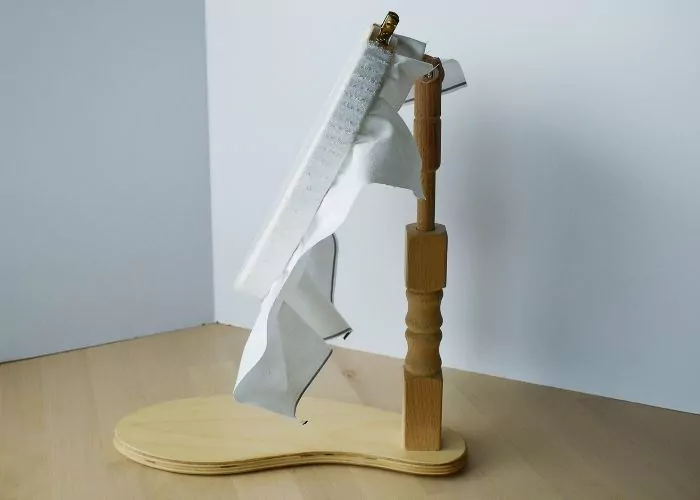
It is best if your embroidery hoop is 2-4 cm (1-1.5 inches) larger than your design. This will allow you to embroider the whole design without recentering it. If your design is significantly larger, opt for a 15-18 cm (6-7 inches) hoop and recenter the work as you embroider. However, a much bigger hoop can be too big to hold, and your hands will get tired of controlling it.
Hand embroidery hoops, I recommend
High quality wooden hoops
Plastic hoops for hand embroidery
Bamboo hoops for hand embroidery and needlework display
Flexi hoops for needlework display
Embroidery hoops with spring tension
Hoop frames for display
Frequently asked questions about hand embroidery hoops
What is the best type of embroidery hoop for beginners?
A medium-sized wooden hoop (6–7 inches) is ideal for beginners. It provides a comfortable grip, holds fabric tension well, and is durable enough for regular use.
Do I always need to use an embroidery hoop?
Not always. Techniques like sashiko and boro embroidery do not require a hoop. However, most surface embroidery projects benefit greatly from using a hoop to maintain even fabric tension and prevent puckering.
Are bamboo embroidery hoops suitable for stitching?
Bamboo hoops are budget-friendly but not the best for actual stitching. They often lose tension and may have rough edges. They’re better suited for framing finished needlework projects.
What size embroidery hoop should I use?
Choose a hoop that’s 1–1.5 inches (2–4 cm) larger than your design. A 6–7 inch hoop is the most comfortable size for general hand embroidery.
How do I keep fabric from slipping in the hoop?
Wrap the inner hoop with cotton twill tape to improve grip and reduce fabric slippage. This also helps protect delicate fabrics and prevents creases.
Can I leave my embroidery in the hoop overnight?
It’s not recommended. Prolonged tension can cause fabric creases or even damage delicate materials. Always remove your fabric from the hoop when you’re not stitching.
What’s the difference between screw tension and spring tension hoops?
- Screw tension hoops allow precise control over fabric tension and are ideal for hand embroidery.
- Spring tension hoops are quicker to use but offer less control.
Are Flexi hoops good for embroidery?
Flexi hoops can be used for embroidery, but since their tension isn’t adjustable, they work best for lighter fabrics or framing finished pieces, rather than heavy stitching work.
What is the best hoop for framing the embroidery?
Any embroidery hoop can be used as a frame for displaying needlework. In this range, bamboo hoops are the most affordable option, and professional display hoops are the most suited.
Read a blog post “How to Frame Embroidery in a Hoop: Six Methods of finishing the back of the hoop” to learn more about various methods you can use for framing your stitching art in the hoop.
Over to you
Choosing the right hand embroidery hoop may seem like a small decision, but it can make a big difference in the comfort, quality, and enjoyment of your stitching experience. Whether you prefer the durability of wooden hoops, the affordability of plastic, or the decorative charm of bamboo for framing, there’s a perfect hoop for every purpose. Consider the type, size, material, and depth that best suit your embroidery style and project needs.
With the right hoop in hand—and a few of the tips shared above—you’ll be ready to create beautiful, precise embroidery with confidence.


